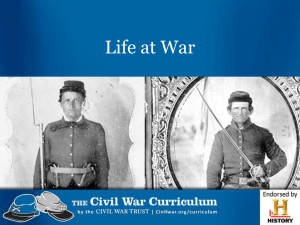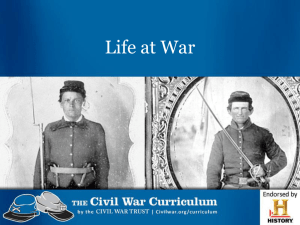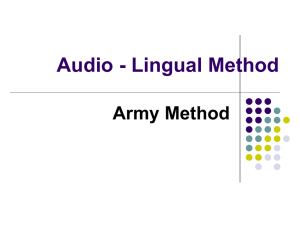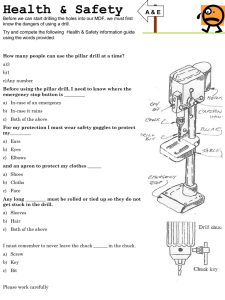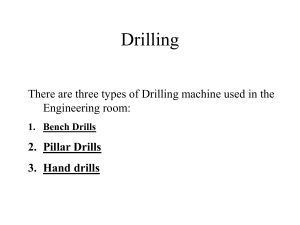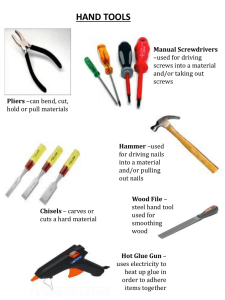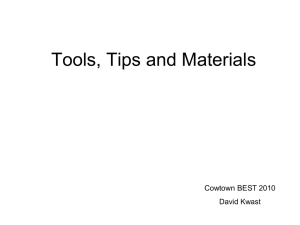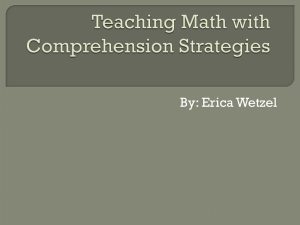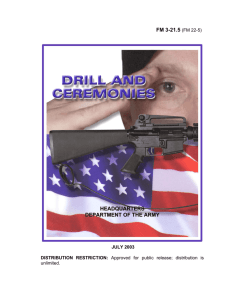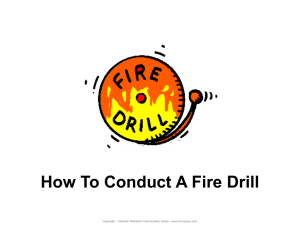The Model Course 1902
advertisement
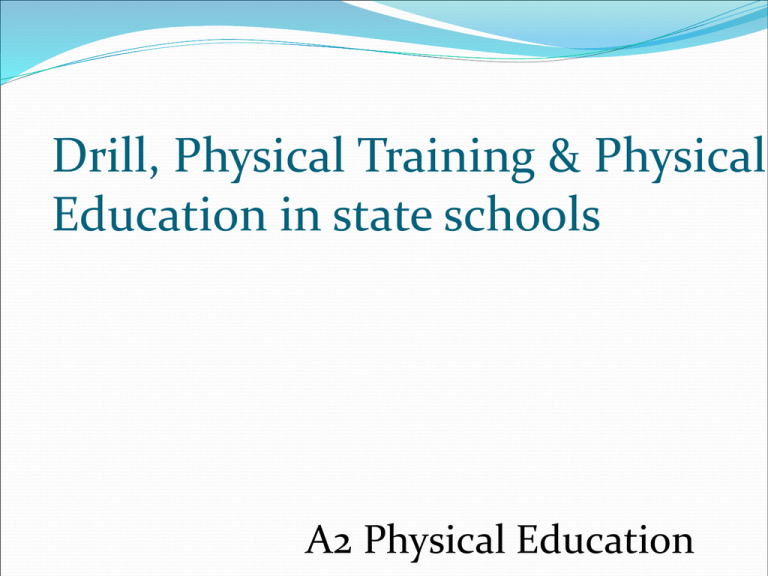
Drill, Physical Training & Physical Education in state schools A2 Physical Education Learning objectives (1) How physical activity in state elementary schools progressed from military drill to physical training (PT) and then to Physical Education (PE) between 1900 and 1950 The ways in which drill, PT and PE in state schools impacted on participation and the promotion of healthy lifestyles. How to link what happened then to what is happening in schools today Learning objectives (2) The objectives, content and teaching methodology of each approach How war affected the different approaches How did the experiences of working class children differ from that of middle & upper class children. Learning Objectives (3) The Impact on participation of teachers’ industrial action in the 1970s & 80s The aims of the National Curriculum for PE (NCPE) & how to critically evaluate its impact. ‘While officers prepared for battle on the fields of Eton… their troops prepared with military drill in school playgrounds.’ The best way to civilise street Arabs and hooligans was to drill them in habits of instant obedience Elementary School Drill FORSTERS 1870 EDUCATION ACT WAS AN ATTEMPT TO ‘PLUG THE GAP’ IN ELEMENTARY SCHOOLING AND LED TO THE DEVELOPMENT OF BOARD SCHOOLS. IN BRITAIN BEFORE 1870 THERE WAS NO NATIONAL SYSTEM OF ELEMENTARY EDUCATION – MOST PROVISION WAS FEE PAYING AND THEREFORE ONLY CHILDREN OF THE UPPER AND MIDDLE CLASSES WERE EDUCATED. FOSTER ACT, 1870 – MADE EDUCATION COMPULSORY FOR ALL CHILDREN BETWEEN THE AGES OF 5 AND 13 YEARS. THERE WAS GREAT CONCERN ABOUT THE HEALTH AND FITNESS OF THE WORKING-CLASS CHILDREN. THE ACT STATED ‘ATTENDANCE AT DRILL UNDER A COMPETENT INSTRUCTOR FOR NOT MORE THAN TWO HOURS PER WEEK AND TWENTY WEEKS IN THE YEAR. Elementary School Drill Objectives Content Fitness for army recruits 1870s: Military Drill Discipline 1890s: Swedish Drill In 1866 The Army 1900: Board of rejected 380 out of each 1000 recruits. Education stated that games were a suitable alternative. Methodology Authoritarian / Command-Response Taught by army NCOs in 1870s Taught by qualified class teachers in 1890s Humiliation of the British Army Following the humiliation of the British Army by a small group of Dutch settlers in the Boer War the Generals and Politicians decided to blame: Lack of Fitness of the soldiers. Swedish Drill being taught in schools. The Board of Education (now called the DFES) and the War Office devised a new programme of PE called the Model Course of Physical Training. Colonel Fox A long-serving army officer. His regime involved basic military drill. It was heavily criticised for treating children like soldiers. The Model Course of Physical Training 1902 ‘It is important therefore that the short time claimed for physical training should be devoted wholly to useful exercises. No part of that time should be wasted on what is merely spectacular or entertaining, but every exercise should have its peculiar purpose and value in a complete system framed to develop all parts of the body’ Objectives Fitness (for military service) Training in handling of weapons Discipline Content Military Drill Exercises Weapon Training Deep Breathing Methodology Command-response (for example, ‘Attention’, ‘Stand at Ease’, ‘Marching, about turn’) Group response/no individuality In ranks Key points to remember In 1902 military needs became more powerful than educational theory. The Swedish Drill was seen as a theraputic approach so abandoned. Girls and boys were instructed together. Taught by army NCO’s (or teachers who had been trained by them). Dull and repetitive but cheap. Key Points continued Large numbers in small spaces. Set against a backdrop of poor diets, bad housing and other forms of social deprivation. It lowered the status of the subject.

